Wenngarn Castle in Sigtuna is a beautiful castle, once built by Magnus de la Gardie. Here you can stroll in the beautiful castle park, or perhaps have a coffee or lunch at the bakery. It is also close to Sigtuna, Sweden's oldest town.
Table of contents
Wenngarn Castle
Wenngarn Castle dates back to the 12th century, but the castle you see today dates back to the 17th century. There are occasional guided tours, as well as a castle park, castle shop and bakery.
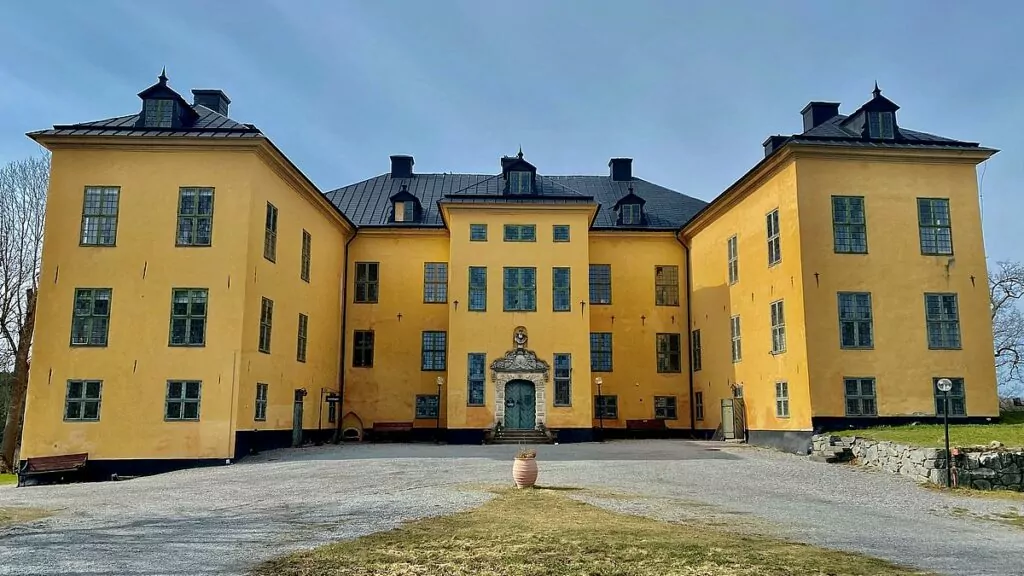
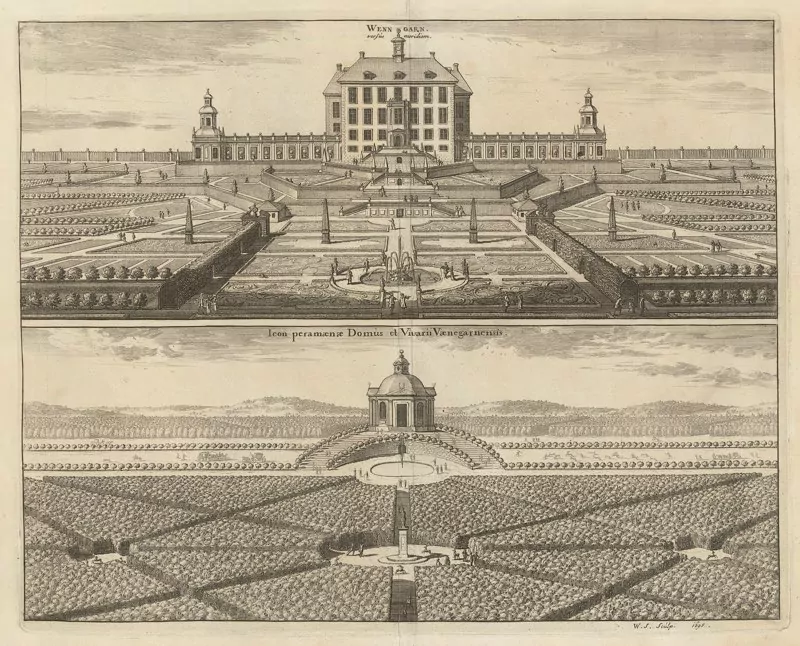
Wenngarn Castle is located a few kilometres north of Sigtuna, in Stockholm County, in the province of Uppland.
From antiquity and De la Gardie to asylums and hotels
Wenngarn Castle is located on a site with a very long history. It is known that people lived here as early as 1500 years ago and around 970 Sweden's oldest town, Sigtuna, was founded nearby. If you want to learn about the history, you can follow the excellent signs around the castle and the castle park.
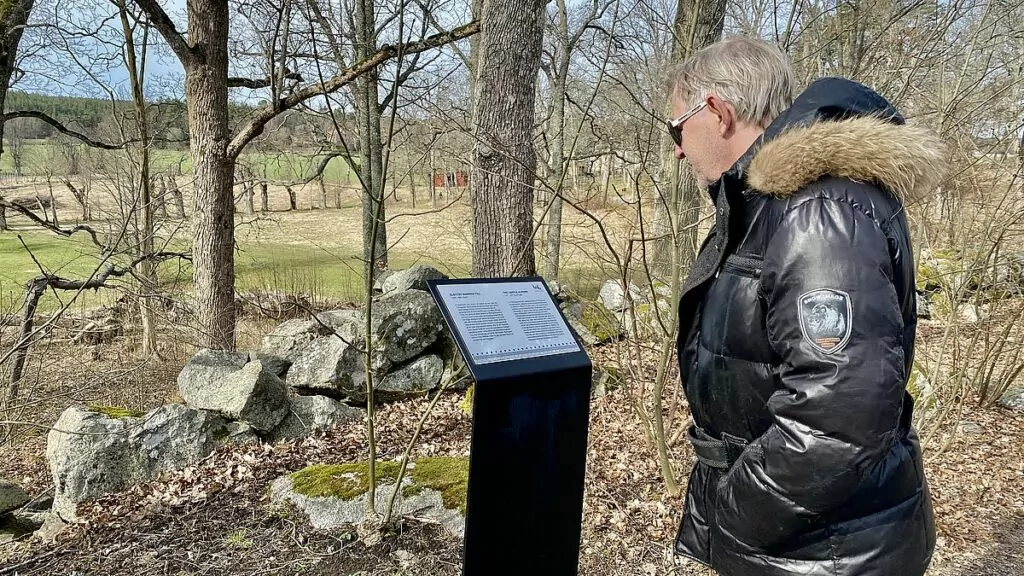
In the 12th century, the first stone house was built on the site, which was impressive at the time as ordinary people lived in wooden houses. In the 17th century, the estate was taken over by Magnus Gabriel de la Gardie, who built the castle that exists today with the help of architect Jean de la Vallé.
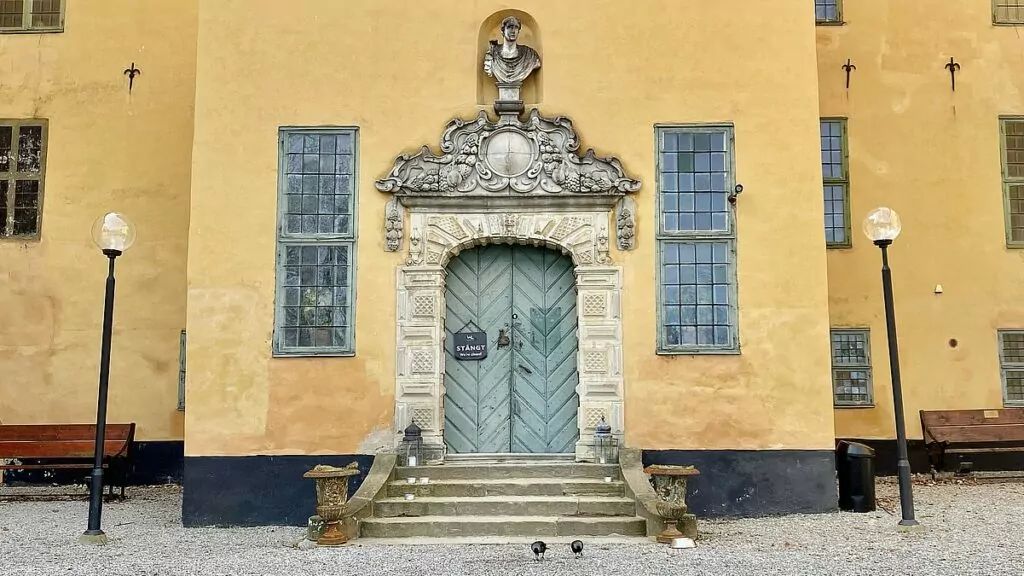
The castle later became the property of the Crown, and in the 1930s it was decided to run a drug treatment centre on the site. An additional building was constructed, which today serves as the 'Hotel Anstalten'.
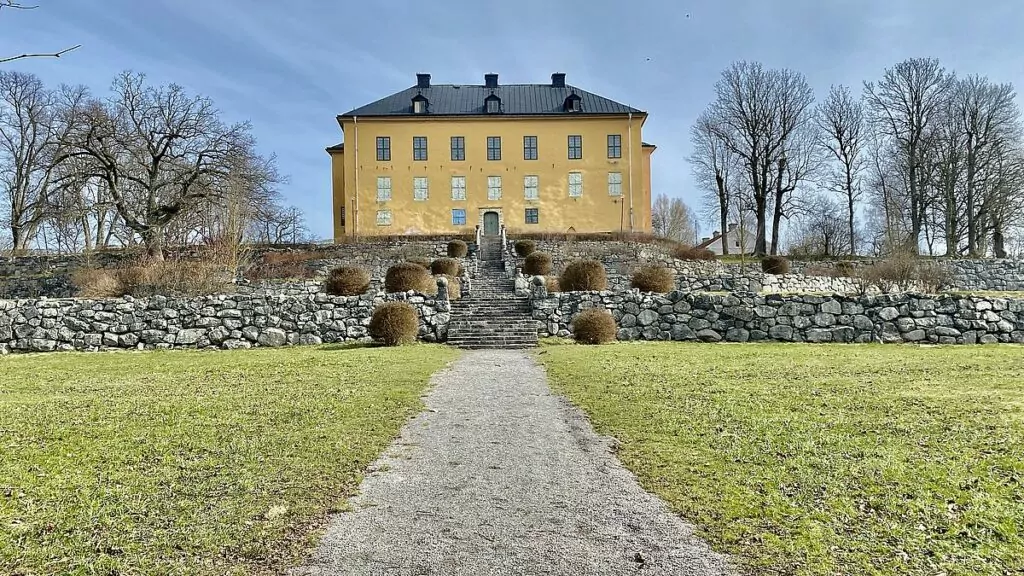
When Magnus Gabriel de la Gardie rebuilt Wenngarn Castle in the 17th century, he erected a first bell tower. After his death, the tower fell into disrepair and was demolished in the 1730s. In the 1940s, the Sigtuna Sewing Society started a fundraising campaign to see a bell tower at Wenngarn once again, and eventually the estate could once again boast a bell tower.
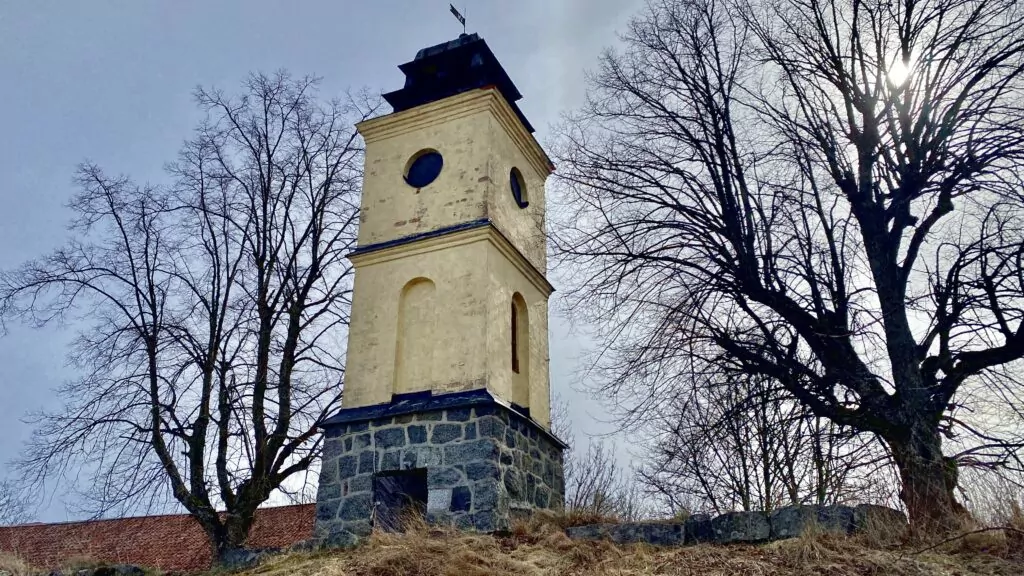
Castle Park
Wenngarn's baroque park was created in the 17th century, under the supervision of Magnus Gabriel de la Gardie, probably with the help of the architect Jean de la Vallée. At the beginning of the 21st century, the park was completely overgrown and, after many years of decay, Wenngarn is now focusing on rebuilding the park.
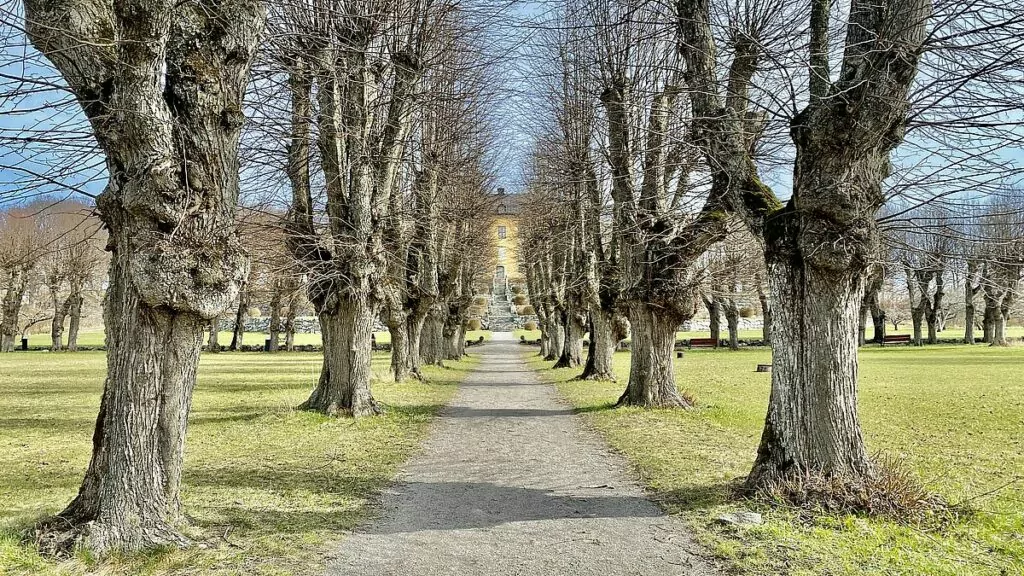
The park is made up of several grand avenues and large green areas, including a pond filled with small red fish.
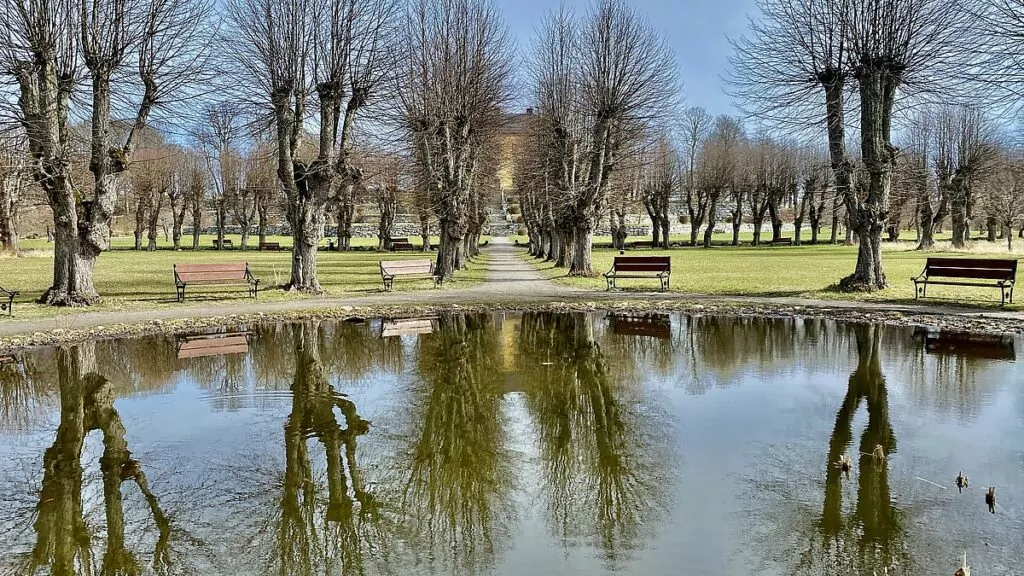
After all the visits to castles, it feels like we have started "collecting" photos of ancient trees. Isn't it a bit fascinating to see these trunks that have been here throughout history?
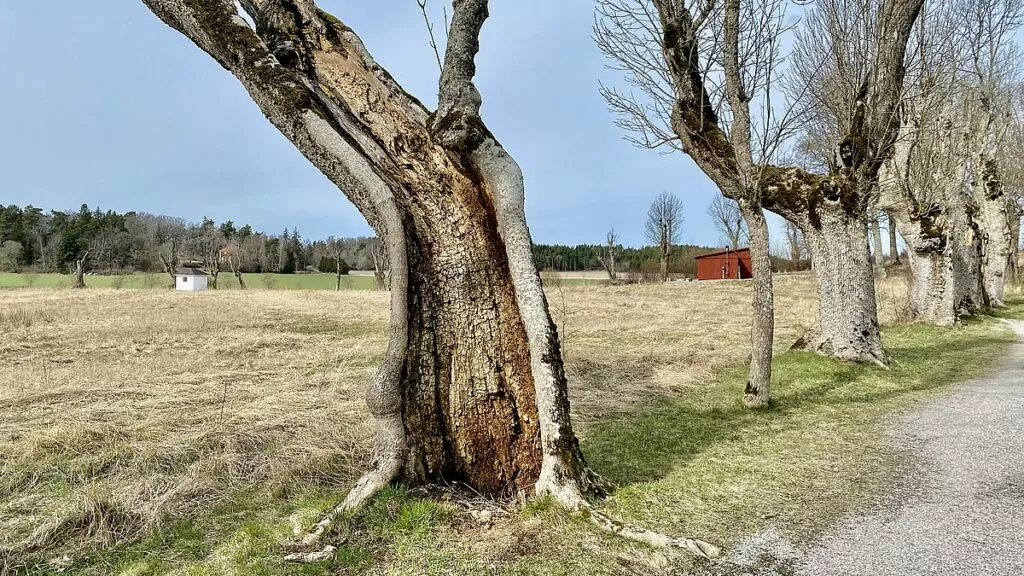
Restaurants at Wenngarn Castle
At Wenngarn Castle there are several options for those who are hungry or hungry. Dammstugan is a charming little house where you can eat wood-fired pizzas.
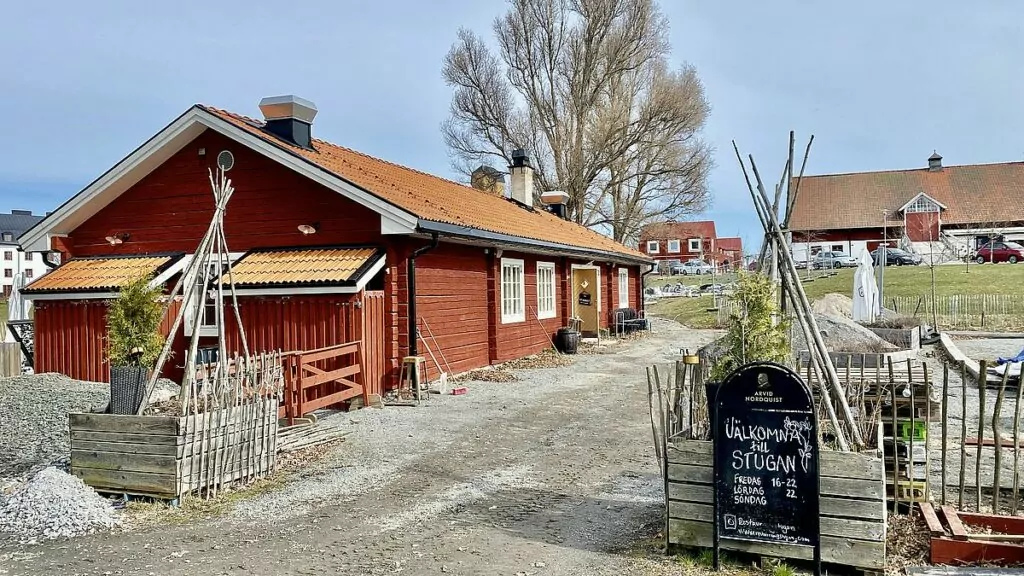
A little higher up you'll find Wenngarn's bakery, which currently offers a soup buffet at weekends. By the way, there is also a cider brewery and a gin distillery in the area.
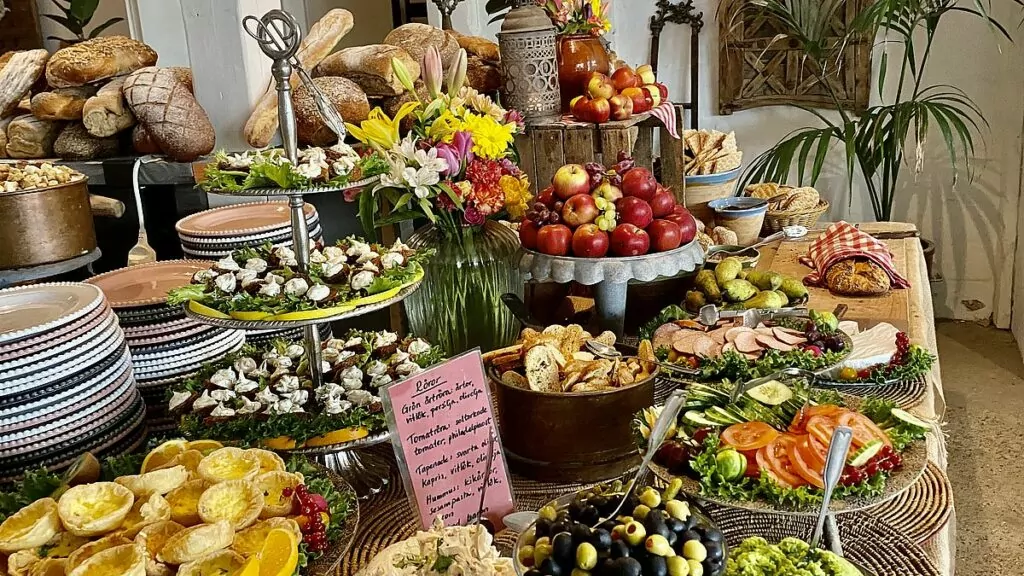
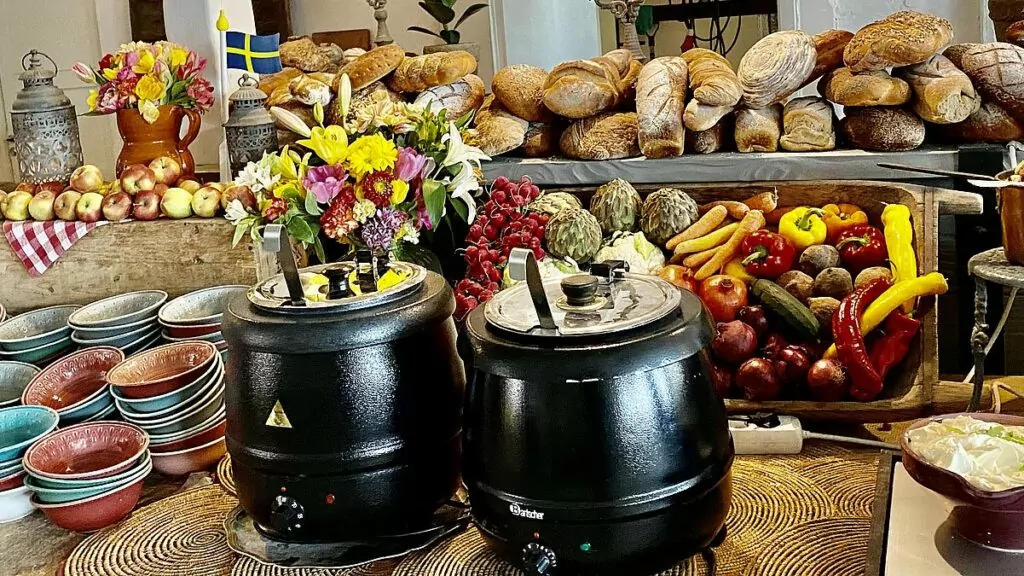
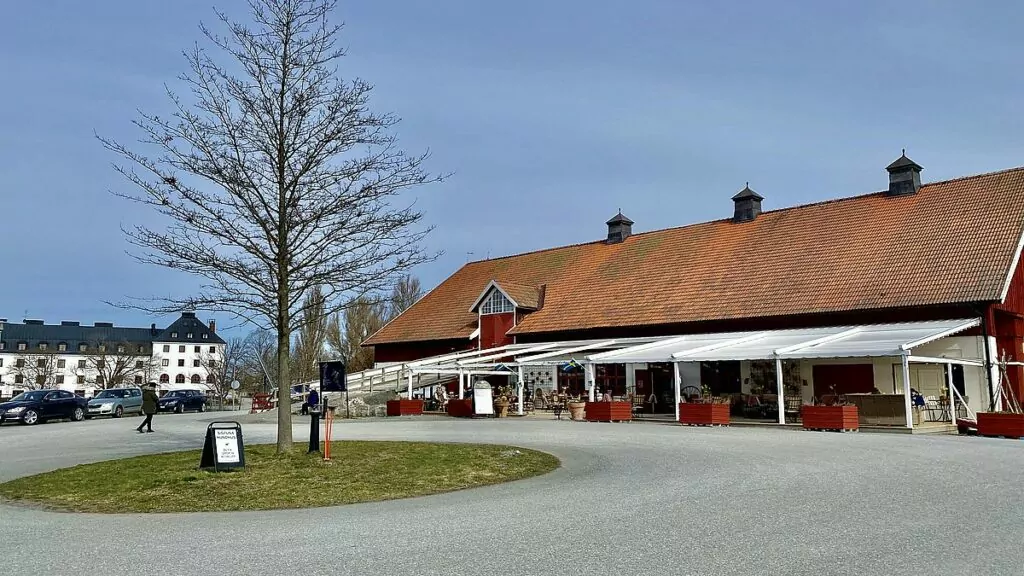
Church ruins in Sigtuna
We continued our journey to Sigtuna. Did I tell you that Peter likes church ruins? We have been to Sigtuna before and then we saw one of the church ruins. Now he had discovered that there are three in total and he wanted to visit them. And they are indeed fascinating!
St Peter's church ruin is the ruin of St Peter's Church, which was completed around 1100. The church is thought to have been the cathedral of the archdiocese before the move to Old Uppsala in 1190.
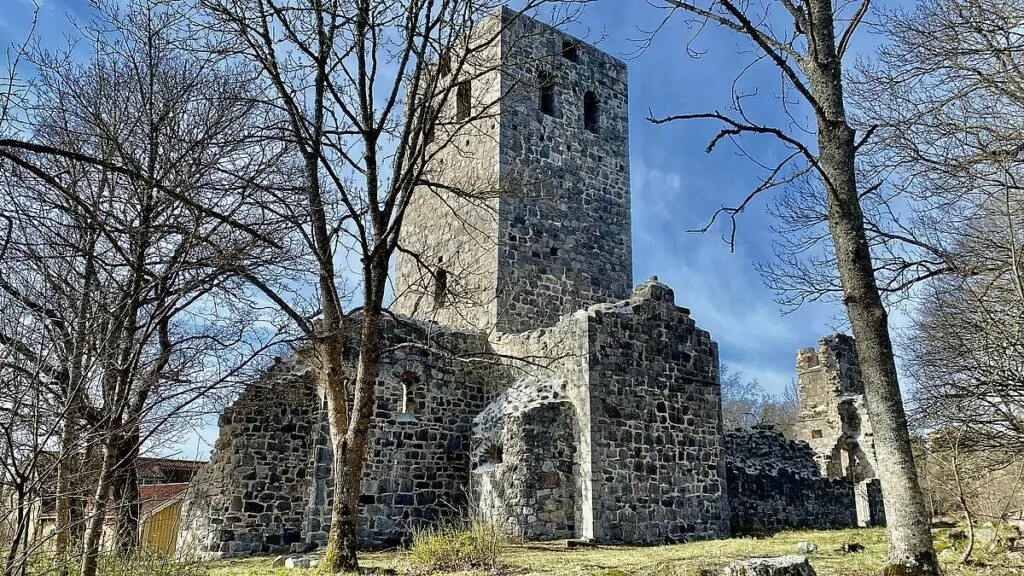
St Olaf's churchyard is approximately contemporary with the St Peter's church ruin.
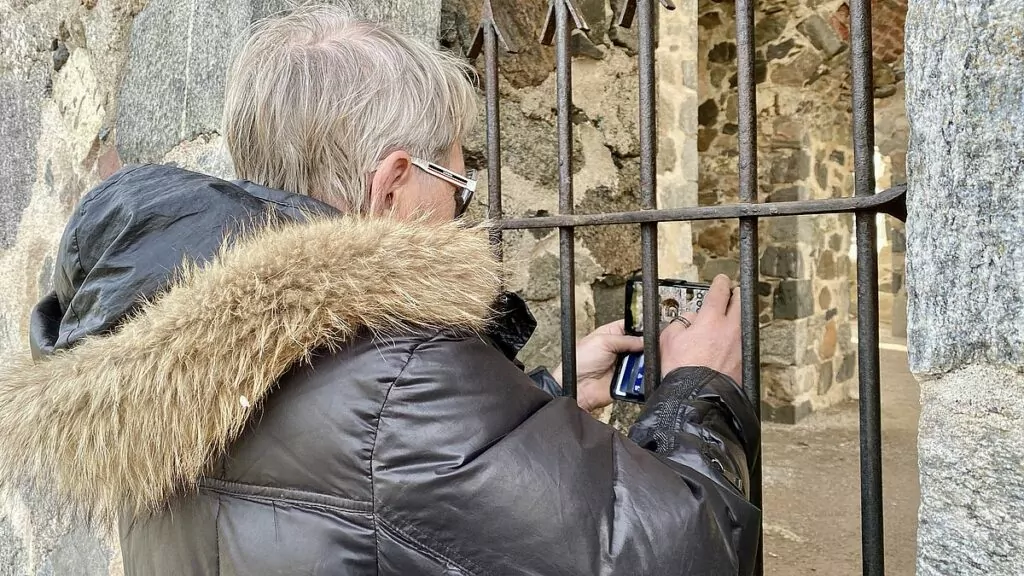
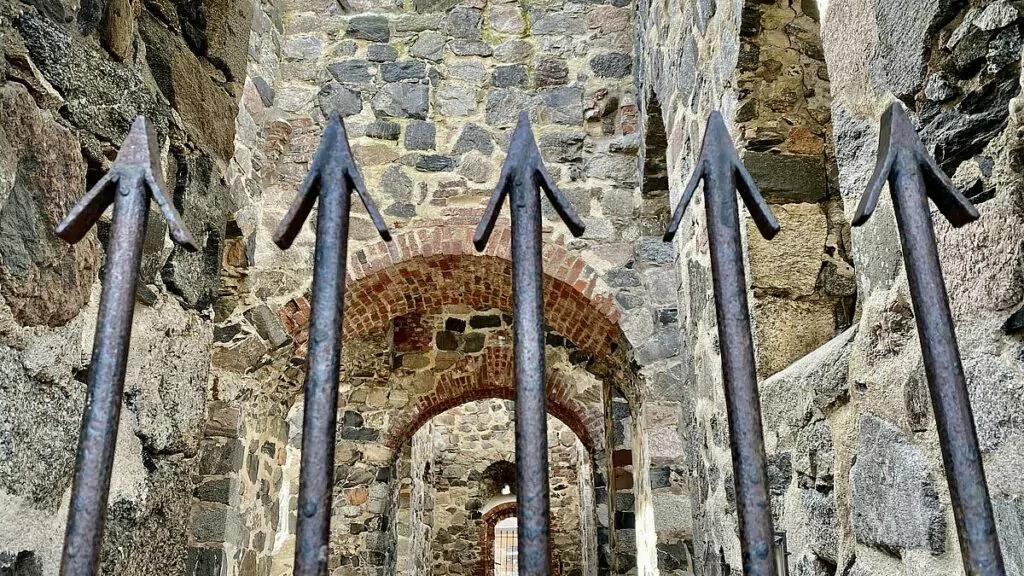
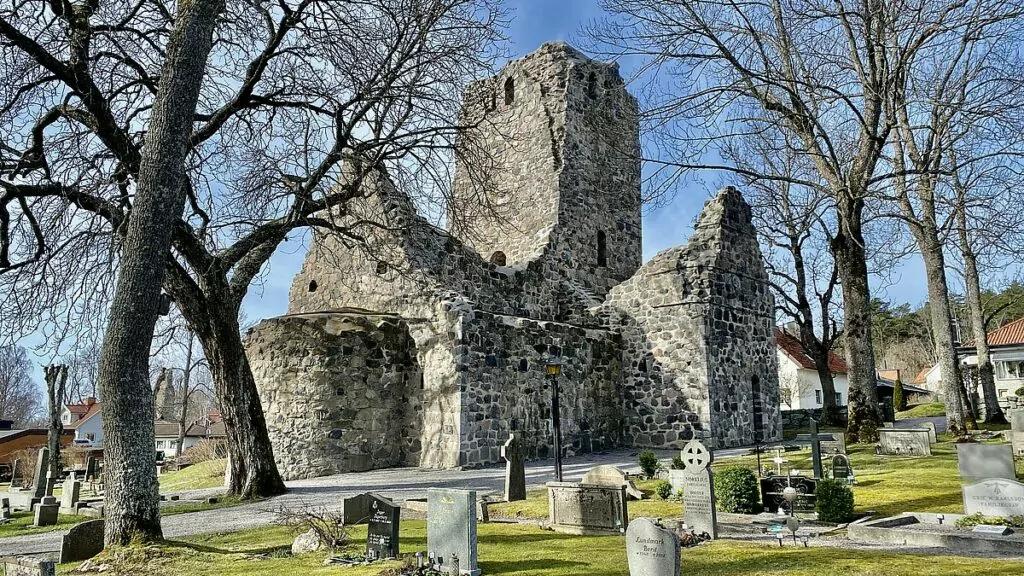
St Lars church ruin is the church ruin of which the least remains. This church was also built in the 12th century, at the time of Christianisation.
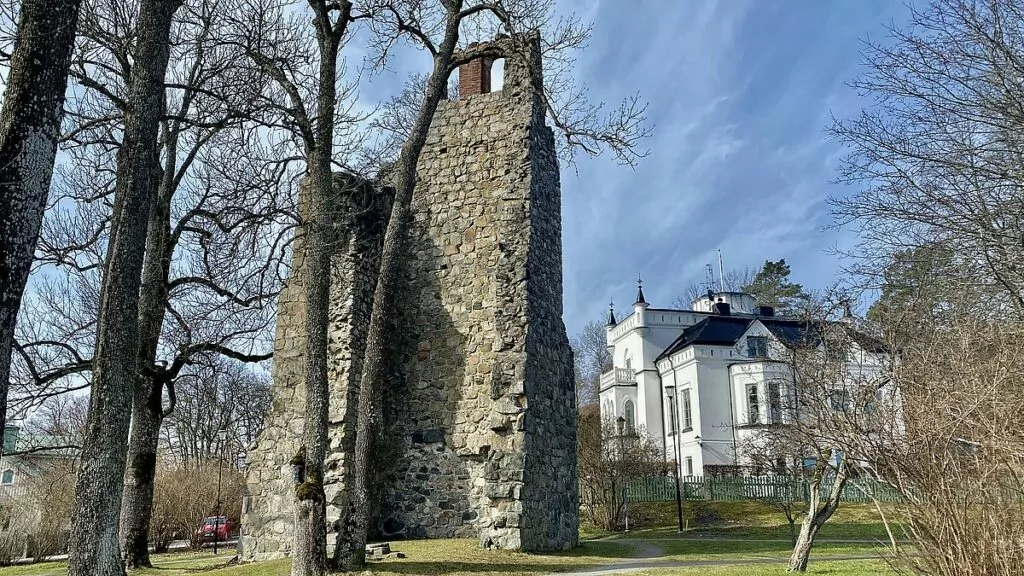
More to see and do in Sigtuna
There is, of course, much more to see and do in Sigtuna. If you like castles, you can visit the royal one Rosersberg Castle, but also Skånelaholm Castle and Steninge Castle. Sigtuna, considered Sweden's oldest town, is also a cosy place to visit with charming alleyways, cafés, bakeries and a nice seaside promenade. Below you will find even more tips for Uppland.
Bredsands camping in Enköping
Finally, we have a completely free weekend and the opportunity to go out with the motorhome ....
Skokloster Castle - magnificent baroque castle by Lake Mälaren.
Skokloster Castle is a magnificent baroque castle on Lake Mälaren. This is the largest private palace that...
Österbybruk - mansion and mill environment in Roslagen
Österbybruk is beautifully located in Roslagen and offers a beautiful manor house, historic mill environment and...
Pampas marina in Solna - all you need to know
Pampas marina in Solna is a marina, where you will also find houseboats and a restaurant....
What to do in Stockholm - 30 sights and experiences
What to see and do in Stockholm? Stockholm is the capital of Sweden and has lots of...
Rydboholm Castle in Roslagen - and the English Park
Rydboholm Castle in Roslagen is a private castle from the 16th century, and next to the castle is the...
What to do in Sundbyberg - 9 tips for cosy Sumpan.
What can you do in Sundbyberg? We have lived in Sumpan for many years, and...
Ängskärs sea campsite in Uppland - and three caravan sites
Ängskärs havscamping is beautifully situated on the Hållnäs peninsula in north-eastern Uppland. We camped here for one day and...
Väddö sea baths and camping in Roslagen
Väddö havsbad och camping på Väddö is a campsite with a sandy beach, surrounded by beautiful nature....
Öregrund in Roslagen - tips for things to see and do
Öregrund is a real gem in Roslagen with charming alleys, beautiful old wooden houses and a...
Ulriksdal Palace and Park - Royal Palace in Solna, Sweden
Ulriksdal Palace is one of the eleven royal palaces in Sweden, and offers a...
Butterfly House in Haga - tropical climate, butterflies and sharks
Have you visited the Butterfly House in Haga? For us it was a long time ago, but now...
From Sundbyberg to Sigtuna - a visit to the Sigtuna Foundation
Guest writer: Christina Gripenberg More specifically, to the Sigtuna Foundation. It's a journey of 1.5 hours, first...
Lingnåre cultural reserve - historical trails in Uppland
Lingnåre Cultural Reserve is located on the Hållnäs peninsula in the municipality of Tierp. There are currently a total of 43 cultural reserves...
Huvudsta farm in Solna - murder story and beautiful surroundings
Huvudsta farm in Solna is located a short walk from the marina where we live. We are...
Road trip in Roslagen - 10 places to visit
Looking for a road trip in Roslagen? We recommend ten great destinations to visit...
Museums in Stockholm - guide to the city's best museums
Why not visit some museums in Stockholm? Sweden's capital city is one of the world's most museum-rich...
Rullsands camping and sea baths
Rullsands camping is a nice campsite outside Gävle. The location of the campsite is very nice and...
Kungsträdgården in Stockholm - and the Makalös Palace
Kungsträdgården in Stockholm is a beautiful park where people stroll, have coffee, listen to concerts and...
Riddarholm Church in Stockholm - the burial place of kings
Riddarholm Church is Stockholm's only surviving medieval monastery church. This magnificent building, constructed at the end of the...
Best restaurant at Arlanda? - we have tested La Girafe
Which is the best restaurant at Arlanda? There are of course several answers to this question...
The Swedish Upplands Road - FREEDOMtravel Themed Roads
Writer: Peter Bergström The Swedish Upplandsvägen is a themed road that takes you from Stockholm through...
Royal palaces in Sweden - 11 magnificent castles
Royal palaces in Sweden are the subject of today's article. Did you know that there are 11...
Görväln Castle and Görväln Nature Reserve
Görväln Castle and Görväln Nature Reserve are located in Järfälla municipality, north-west of Stockholm. We made a...
Riddarhuset in Stockholm - interesting to visit
The Riddarhuset in Stockholm is open to visitors for an hour every weekday, and making a...
Siggesta Gård in Värmdö - now with parking spaces
Siggesta Farm in Värmdö, outside Stockholm, is a rural hotel with conference facilities, outdoor activities, animals,...
Gustavsberg in Värmdö - in the footsteps of the porcelain factory
Gustavsberg is a nice little town in the municipality of Värmdö in Stockholm, which is mainly...
Pythagoras Industrial Museum in Norrtälje - step into history
The Pythagoras Industrial Museum in Norrtälje tells, in a very vivid way, about a piece of Swedish industrial history....
Excursions in Stockholm in times of coronavirus - 15 tips
Tips on 15 excursions in Stockholm in times of corona! Because yes, what do you do when you...
Grisslehamn in Roslagen - 7 tips on things to do
Located on Väddö in Roslagen, Grisslehamn is a charming little town that is bustling with...
Free camping at Lake Erken and Norr Malma nature reserve
During the last night of the midsummer weekend, there was free camping at Lake Erken in Roslagen, at Svanberga bathing area....
Albert Engström's museum in Grisslehamn, Roslagen.
The Albert Engström Museum is located in Grisslehamn in Roslagen and tells the story of the artist Albert Engström. Here...
"The whole journey" at Paul Taylor Lanthandel in Sundbyberg, Sweden.
We recently tested the 'Whole Journey' menu at the celebrity restaurant Paul Taylor Lanthandel in Sundbyberg. This is...
Grönsöö castle in Uppland - and a cosy free camping site
Grönsöö Castle is a fine 17th century castle on the island of Grönsö in Lake Mälaren, Uppland. In the summers, the...
What to do in Solna - 15 activities and experiences
What can you do in Solna? We have lived in Solna for eight years, and before...
Visiting the Royal Palace of Stockholm - photos and tips
What is it like to visit the Royal Palace in Stockholm? If there is any attraction in the...

Have you visited Wenngarn Castle?
Have you visited Wenngarn Castle, or any of the other castles in the area? Perhaps you have even more tips?
Facts about Wenngarn Castle
- Country: Sweden
- Landscape: Uppland
- County: Stockholm County
- Municipality: Sigtuna
- Developer: Magnus Gabriel De la Gardie
- Architect: Jean de la Vallée
- Completion: 1670
- The name: The final word (garn) may refer to something long and narrow in the terrain, and the castle is located at a bay called Garnsviken. The prefix seems unclear, but one suggestion is that it was the dialectal word "fin", which describes a place where birds have mating games.
- Read more: You can find more information at the castle's website
History at Wenngarn Castle
- Early history: The oldest graves in the area are 1500 years old.
- 970s: Sigtuna, Sweden's oldest town, was founded and Christianity began to take hold. Garnsviken was an important communication route, along which 12 rune stones have been found.
12th to 15th century
- 12th century: A grey stone house was built on the site of Wenngarn Castle.
- 1160s: In the oldest letter written by a Swede, Archbishop Stephen resolves a dispute between Doter and her son Gere regarding a donation to the Cistercian monks in Viby. The dispute was partially resolved by King Knut Eriksson donating parts of his land in Julita to the monks.
- 1282: On 27 September a Mr Gere is mentioned on "Vinagarum", which is the first time Wenngarn is mentioned in writing. The name Gere is unusual and Gere at Wenngarn was probably a relative of Gere in Viby.
- 15th century: Eskil Banér gave Wenngarn as a morning gift to his wife Cecilia Haraldsotter. Their daughter Sigrid Eskilsdotter became the mother of Cecilia Månsdotter, who in turn became the mother of Gustav Vasa. In her second marriage, Sigrid had the daughter Kristina Gyllenstierna. Kristina lived at Wenngarn with her husband Sten Sture the younger.
16th century
- 16th century: Wenngarn became part of King Gustav Vasa's land ownership.
- 1520: At the Stockholm bloodbath, Kristina Gyllenstiena was sentenced to death, but the sentence was never carried out.
- 1568: The estate was donated to Gustav Vasa's daughter Sofia Vasa, who was married to Magnus of Saxe-Lauenburg. Magnus replaced the old stone house with a larger building.
- 1590s: Duke Gustav of Saxe-Lauenburg had Wenngarn rebuilt as a Renaissance palace. Shortly afterwards, Gustav died after shooting himself in the knee during a military exercise and the castle was returned to the crown.
17th century
- 1619: Wenngarn fell to Gustav II Adolf, who later passed it on to Count Frans Bernhard von Thurn.
- 1653: The estate was sold to Count Magnus Gabriel de la Gardie. He lost ownership due to reduction, but was allowed to dispose of the property until his death.
- 1661: Magnus Gabriel de la Gardie began a major remodelling of the estate, with the help of the architect Jean de la Vallé.
- 1686: Magnus Gabriel de la Gardie died at Wenngarn Castle, and the castle remained in the possession of the Crown.
- End of the 17th century: Wenngarn stood empty for a while and was then rented out as a residence for the county's governors.
18th century to the present
- 1789: One of Sweden's largest silver treasures, weighing around 4 kilos, was found near Wenngarn and Viby by the farmhand Anders Ersson.
- 1913: The law on the treatment of alcoholics was adopted by the Riksdag, and the following year a decision was made to locate an alcoholic institution at Wenngarn Castle. The building was completed in 1916.
- 1930: The orangery was built as a residence and workplace for Wenngarn's gardener. They also wanted to create space for horticulture.
- 1983: Wenngarn was sold to the Lewi Pethrus Foundation. They provided care for addicts until their bankruptcy in 1997.
- 2014: Hotel Anstalten opened in the prison building with accommodation, conference and hotel facilities.



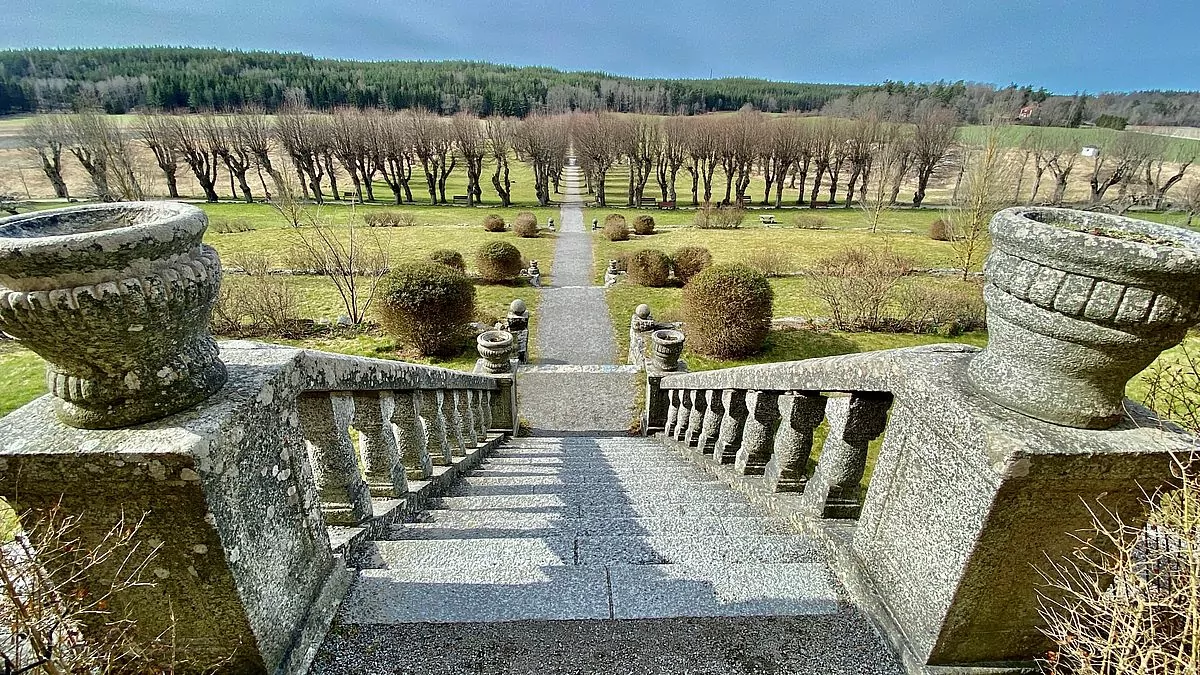






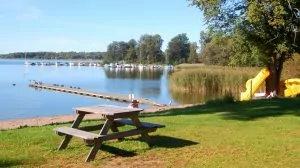
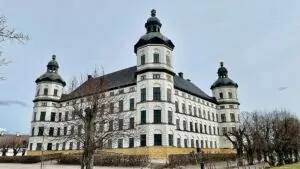
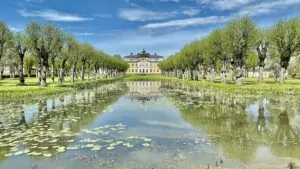

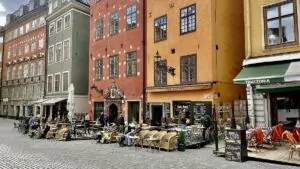
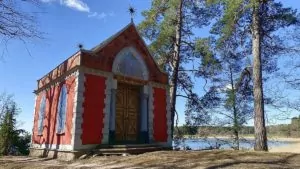
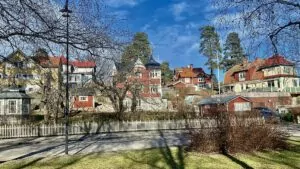

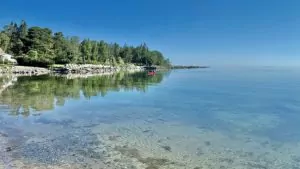
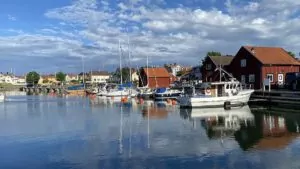
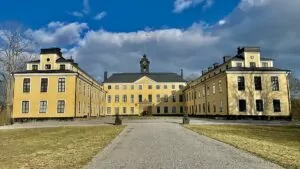
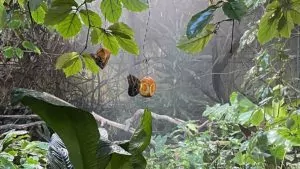
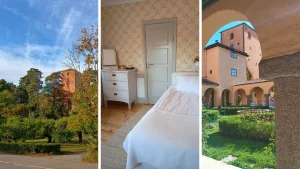
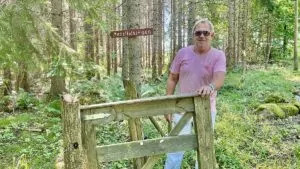
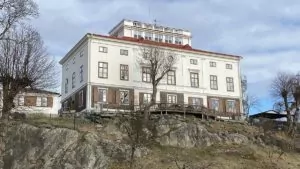
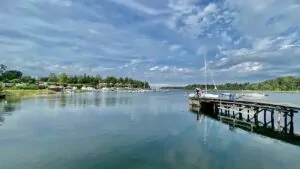

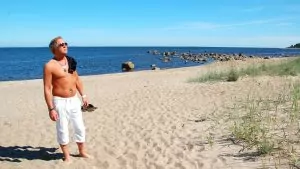
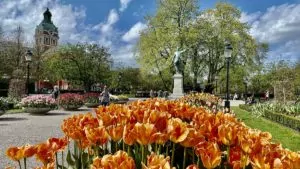
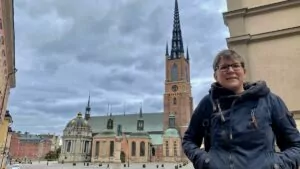
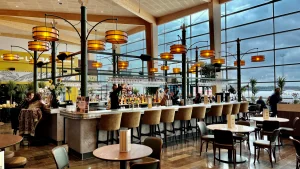
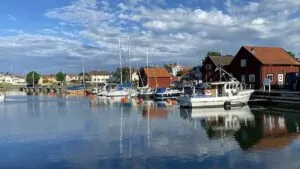
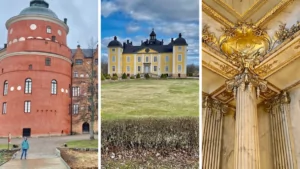
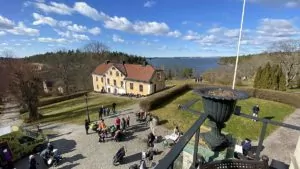
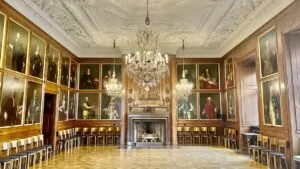
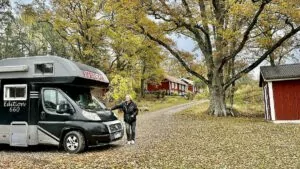
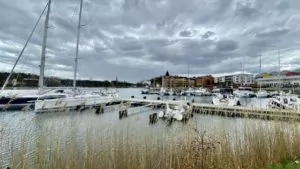
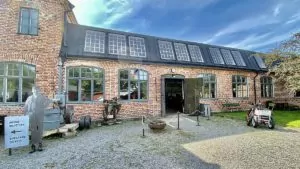

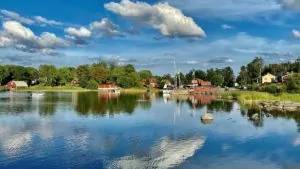
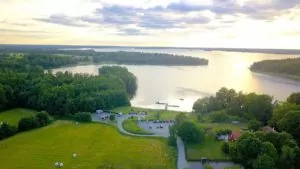
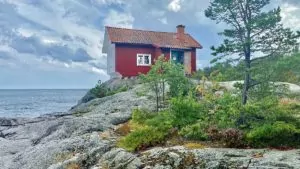

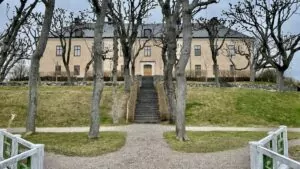
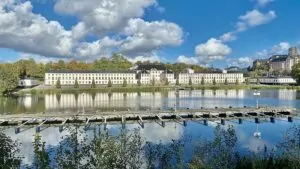
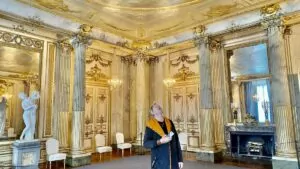
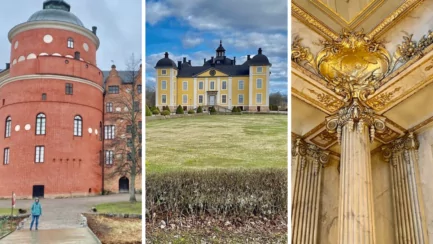
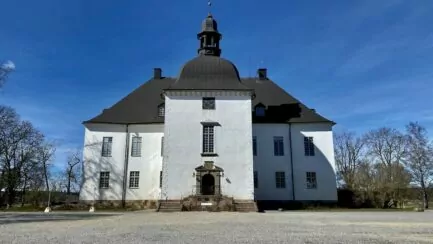
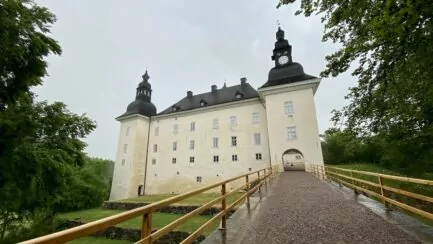



Solan says:
I have a vague memory that Wenngarn functioned for a period as an alcoholic institution, as it was called in the past. My parents had friends in the neighbourhood, I remember lemonade and buns in the bar!
Joined you on the tour, I didn't know about Boo Castle. Yes you hear, we are also castle happy! 👍😊 Nice tour Freedom took us on!
13 April 2021 - 8:37
Helena says:
Yes, that's right about the alcoholic centre! Glad you hung around more among the castles! There will be a few more, I think, then maybe we vary a bit 😉 Fun to be on a roll!
13 April 2021 - 17:04
Ann-Louise Paulsson says:
We stopped by Wenngarn Castle last summer when we were in Sigtuna. Unfortunately, it was getting a bit late so we didn't have time to walk around the area and I settled for taking some pictures of the castle, so we may have to go back and explore more at some point.
13 April 2021 - 8:45
Helena says:
Recognise that with arriving late, it also happens to us sometimes. Nice castle we thought!
13 April 2021 - 17:05
Lena+in+Wales+and+Spain says:
Sigtuna is such a nice little town.
Wenngarn Castle with a slightly different late history.
Thank you for the tour, Lena the castle nerd.
13 April 2021 - 14:39
Helena says:
Sigtuna is really nice, I agree! Funny that you, like us, are a castle nerd 🙂
13 April 2021 - 17:05
Goatfish says:
I like castles and have one of them two kilometres from me. It is Läckö Castle, where Magnus Gabriel de la Gardie was involved, and his hunting lodge and statue stand on the square in Lidköping. Then there is Bjertorp Castle in Kvänum, three kilometres from me.
I don't know Uppland at all, but it would be nice to visit Sigtuna, the oldest town in the country.
Have fun!
13 April 2021 - 17:00
Helena says:
Läckö Castle is absolutely fantastic!!! We visited it last summer, sooo beautiful! I do not know Bjertorp's castle, however.
13 April 2021 - 17:07
BP says:
Absolutely wonderful pictures, especially the one where the old trees are reflected in the water. There are so many castles around here. Have been to beautiful Sigtuna many times, but have never visited the castle. The castle park must be incredibly beautiful during the summer.
13 April 2021 - 20:34
Helena says:
Glad you like the photos! Reflections are grateful, fun to take such photos! 🙂 And yes, there are many castles in the area!!!
14 April 2021 - 8:00
Lena - good for the soul says:
I have never visited that castle. But it certainly looks like it's worth a visit. Looks cosy!
Hug Lena
22 April 2021 - 18:16